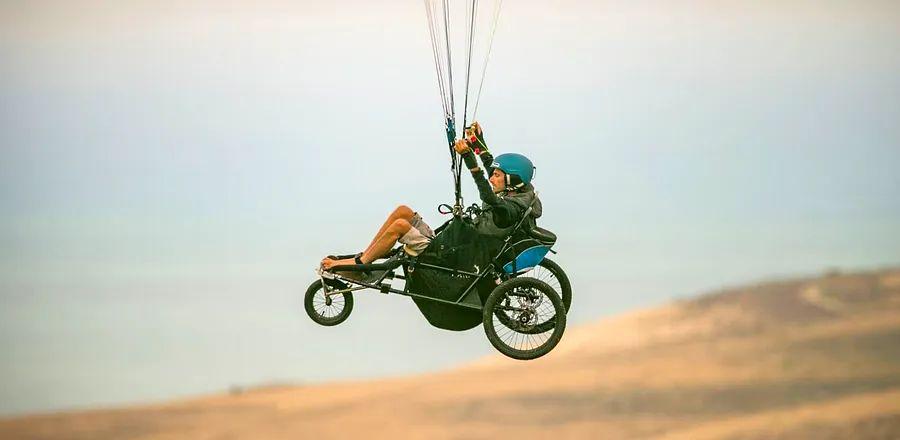How a Tetraplegic Paraglider is Transforming Adventure Travel in New Zealand

For Jezza Williams, adventure has always been an irresistible thrill. He believes, “Kids today seek mischief in all the wrong places; the best mischief is jumping off a big cliff,” his eyes sparkling with excitement. At 46, he possesses a sharp wit and an unyielding desire to test boundaries—even after a life-altering accident.
Williams has been immersed in adventure tourism from the very start: his first gig was at Fox Peak ski field in Fairlie, New Zealand, where he operated a grader on the access road. Resourceful by nature, he fibbed about his age and taught himself to drive the grader in the parking lot.
By his mid-20s, Williams amassed multiple qualifications in outdoor recreation and leadership. For a decade, he thrived on rivers, navigating jungles and deserts worldwide. He guided week-long expeditions on the Zambezi River in Zambia, took groups rafting through the La Mosquitia rainforest in Honduras, and traveled from the UK to Morocco for weeks of multi-day treks in the Atlas Mountains. In New Zealand, he arranged heli-rafting adventures, flying guests to Class V rivers—recognized for their intense and tumultuous rapids—and rafting downstream.
In Switzerland, he led canyoning excursions, where leaping off waterfalls into pools below was second nature. That was until August 2010, when he was 34. A miscalculated take-off resulted in him slipping instead of performing a graceful dive from a waterfall, leading to a crash where the back of his helmet struck a rock.

Image courtesy of Jezza Williams
“I fractured my C5 and C6 vertebrae and landed at the bottom of the waterfall, getting a bit banged up in the process,” Williams recalls. By 'banged up,' he means nearly drowning: alongside his spinal injury, his lungs were collapsing from swallowing water and sand. Following a rescue mission that required a paramedic to descend into the canyon, Williams was airlifted to a hospital where he spent four weeks in a coma.
When he regained consciousness, he was reliant on a breathing machine. Over the next 11 months, Williams had to relearn how to eat, drink, and breathe as a C5 tetraplegic. (He can still lift his arms and bend his elbows.) Returning to New Zealand in June 2011 proved challenging. His friends were still out adventuring while he was beginning anew, depending on carers. He arrived during the gloomy winter, attending rehab two to three times weekly to rebuild his strength. It takes about two years for the body to adjust after such trauma, he explains. The mental struggle was equally daunting: “You have many fears post-injury... You think, Oh, I can’t travel, I can’t enjoy the outdoors, let alone run a business,” he admits. For the first time in his fast-paced life, he had to pause. Then, eight months into rehab, Williams decided it was time to re-enter his world. “I reached out to some friends and asked, What’s happening? That’s when I began creating plans to reintegrate myself into my adventures.”
It was then that Williams realized the significant lack of accessibility and opportunities for people with diverse abilities in New Zealand’s adventure tourism sector. Drawing on his industry experience, determination, and willingness to experiment, he began to find ways back into the outdoors. “I brainstormed ideas for rafting, paragliding, skydiving... It all started quite simply with towels and duct tape,” he shares.

Image courtesy of Jezza Williams
On 25 October 2012, on his birthday, Williams launched Makingtrax, an organization committed to fostering inclusion in adventure travel. His aim was to establish industry standards, educate operators on inclusivity, and direct people to accessible businesses. Today, Makingtrax leads the way for inclusive travel in New Zealand, featuring the first directory of its kind that highlights activities available for individuals of all abilities, from skydiving to whale-watching. Williams consistently challenges boundaries to demonstrate what these activities can encompass.
In 2015, he participated in the Mongol Rally, a 16,000-mile journey from London to Mongolia, alongside friends who were river guides and skydivers. The trek took two and a half months. After the rally, Williams returned to New Zealand with the goal of becoming a paragliding pilot, primarily because it posed a significant challenge. “I can navigate a sea kayak or raft, but I’m not in control, you know? There are others helping me,” he explains. “Paragliding is unique in that I can hop into a buggy and someone can launch me off a hill. That gives me a thrill.” He earned his license.
With funding from the Rātā Foundation and the New Zealand Lottery Grants Board, Williams acquired four specially designed paragliding buggies for individuals with reduced mobility, suitable for both solo and tandem flights. This allows anyone with functional arms and hands to learn to fly within weeks, requiring 40 flights at various locations to complete the process. Assisting others in obtaining their paragliding licenses or enjoying leisure flights aligns with Williams’s mission. Even if the broader industry has been slow to adapt, Williams’s vision has always remained clear.
“Picture this,” he says. “Anyone, regardless of their ability, could fly to New Zealand, try paragliding, and even earn their own paragliding license. They can go mountain biking, kayaking, or embark on a tour around New Zealand with family and friends, just like any ordinary person—because they are ordinary people.”
Evaluation :
5/5



